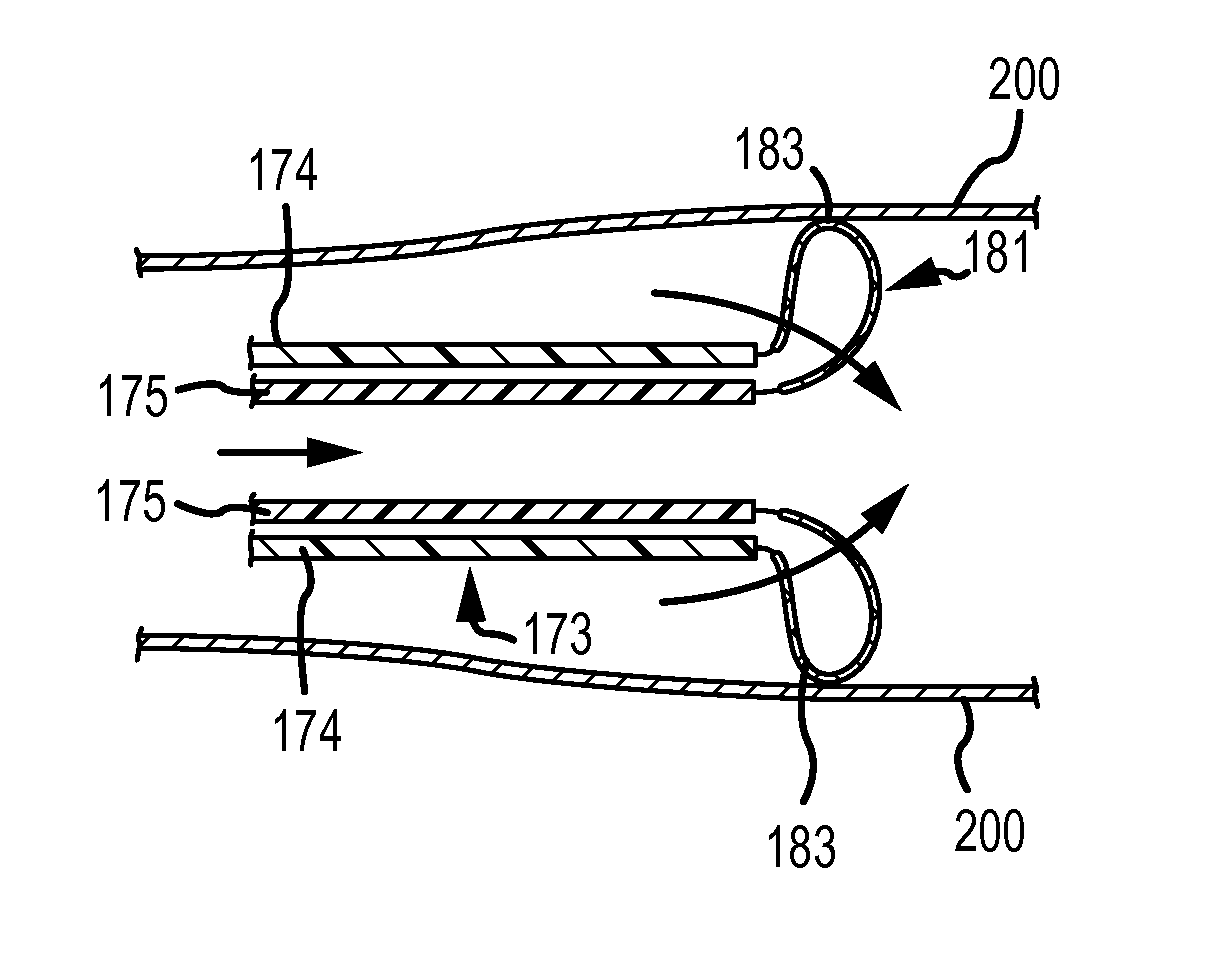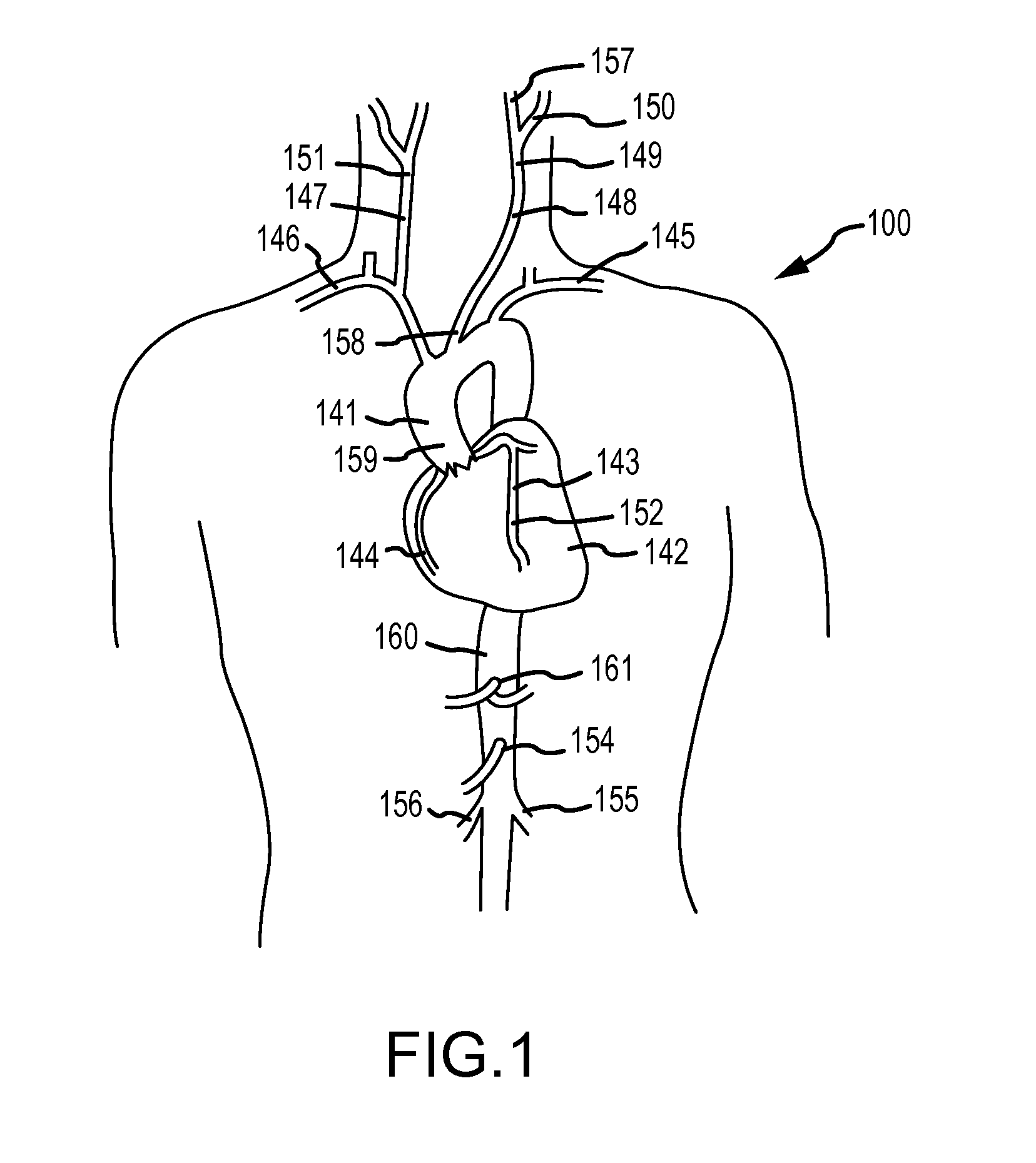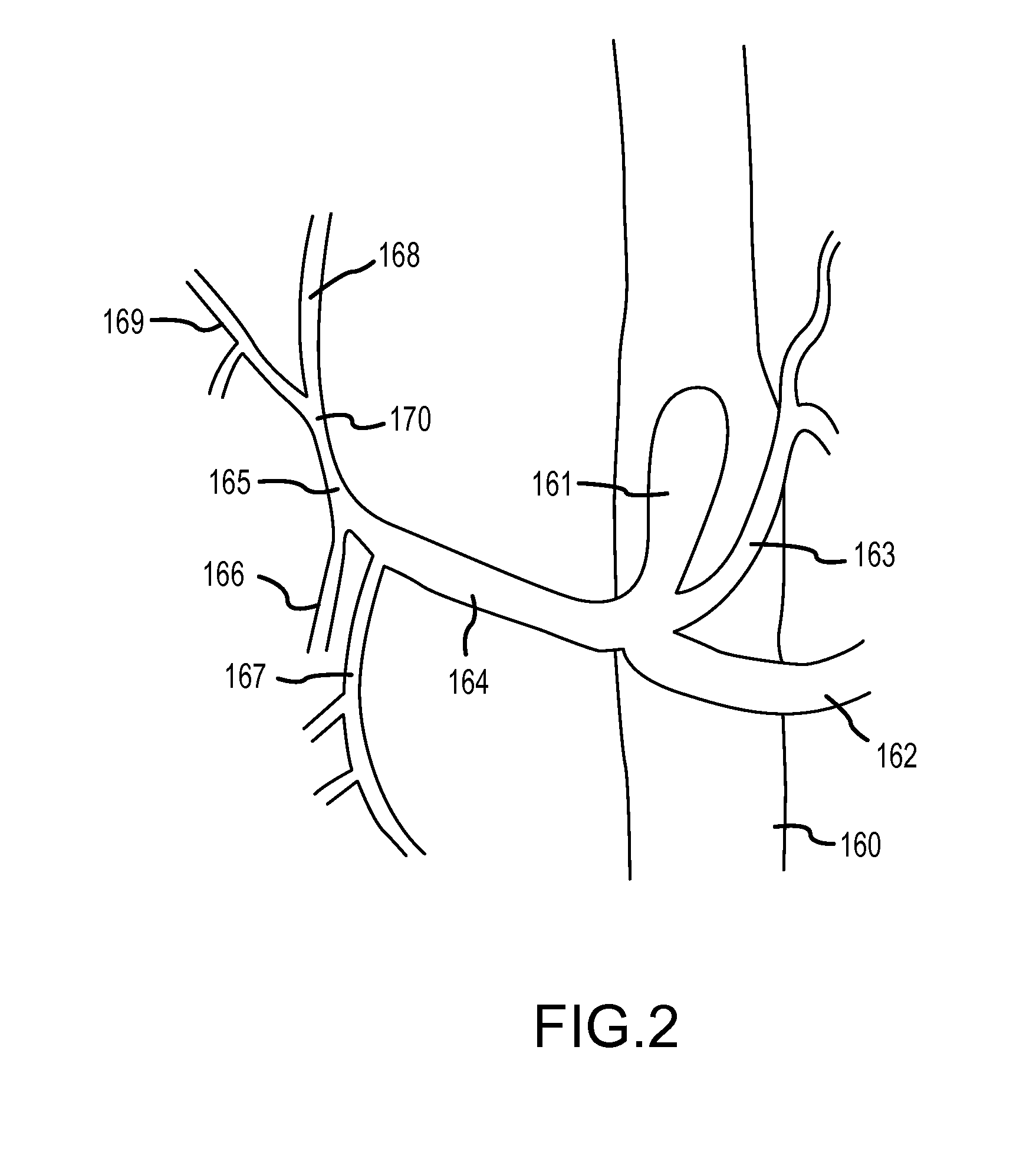This results in repeated attempts to cross the
lesion, change the catheter /
guide wires, predilation with a smaller catheter, reinsertion of the original catheter, and so forth, and adds additional risk and cost to the procedure.
In the case of chronic total occlusions (CTO's), the crossing of the CTO can be extremely difficult as there is a
complete occlusion without a lumen that provides resistance to the passage of the guide wire and interventional device.
Similarly, in the
endovascular treatment of carotid
artery lesions, the acute angles, especially at the origin of the left
common carotid artery, create difficulty in advancing the
stent delivery catheters as the guide catheters tend to back out of the orifice when the
stent delivery catheters are advanced.
This results in repeated attempts at positioning the catheters, changing the catheters, and added risk and cost to the procedure.
The risk of
stroke increases with the difficulty of the procedure.
In fact, the same type of problem occurs with regularity anywhere in the body in which a catheter or guide wire is attempted to be pushed through a tight
stenosis.
The vessels in the
abdomen branch in an
acute angle (with respect to the femoral approach) making them difficult to access also.
While the vessels of the lower extremity may be approached with an antegrade puncture in the ipsilateral
femoral artery, accessing and treating them may present similar problems as above if the access is done from the contralateral
femoral artery.
The combination of the tortuous path the catheters must take, the resistance within the vessel caused by vessel
tortuosity or the constricted
lesion, and the pulsations of the heart and the
aorta combine to make vascular interventions more difficult, more costly, and more risky to the patient than is generally perceived.
The difficulties described above in the current procedures and devices are overcome, as discussed, by changing out the catheters, using other methods and devices, albeit at increased cost and risk, to achieve the desired result.
In this case, there is a likelihood of
reflux of the emoblics out of the intended
artery causing them to embolize to other unintended arteries and organs.
This may cause a litany of problems and complications, obviously.
While current devices are generally effective in treating the tumor or tumors of the liver, they are somewhat crude and cumbersome to use, as there sometimes is
reflux of the toxic chemotherapeutic agent out of the hepatic
artery and into arteries supplying the bowel, and the catheter tip may become dislodged from its place in the proper hepatic artery, retracting more proximally and infusing agent into arteries supplying the proximal small bowel,
pancreas,
spleen, and other organs.
This is of great importance as the
dose being infused may be up to ten times the usual
intravenous dose, and hence can cause serious side effects if not collected as above before entering the
systemic circulation.
Infusion catheters with a
balloon on the distal end have been described, but the
balloon must be expanded completely to produce stability of the
distal catheter and, in doing so, obstructs the flow of the vessel and the flow of the infused material.
This causes the toxic chemotherapeutic agent to flow into vessels other than the intended ones, potentially damaging those tissues supplied by theses vessels, including the
pancreas,
duodenum,
stomach, and
spleen among others.
Even if the catheter tip does not move and is stable, there is the possibility of
reflux of the toxic agent out of the hepatic artery and into these adjacent arteries as spasm may develop in the hepatic arteries as a result of the infusion of the chemotherapeutic agent, or the infusion rate may exceed the flow in the hepatic artery for some other reason resulting in the volume being infused exceeding the capacity of the artery.
The infused agent then refluxes out of the intended artery and into the surrounding vessels not intended for infusion causing the problems discussed above and even death.
This doubt may prevent thousands, and potentially hundreds of thousands, of patients that may benefit from this therapy from receiving it and prolonging their lives.
In some cases, however, the catheter tip becomes dislodged, usually while attempting to place the second or third coil in the
renal artery and the coil embolizes down the
aorta and into a lower extremity or other vessel where it must be retrieved by catheters or by
surgery.
However, such a
rigid collar-like member enables only imprecise degrees of pressure to be axially imparted to the
blood vessel, thereby causing unnecessary trauma to the patient.
The prior art catheters and methods of use do not provide a minimal-trauma device that enables predictable and adjustable
blood flow through or around a
catheter device, prevent reflux as desired, allow centered and / or directional flow of medicament, or accurate, reliable and stable precise positioning.
 Login to view more
Login to view more  Login to view more
Login to view more 


